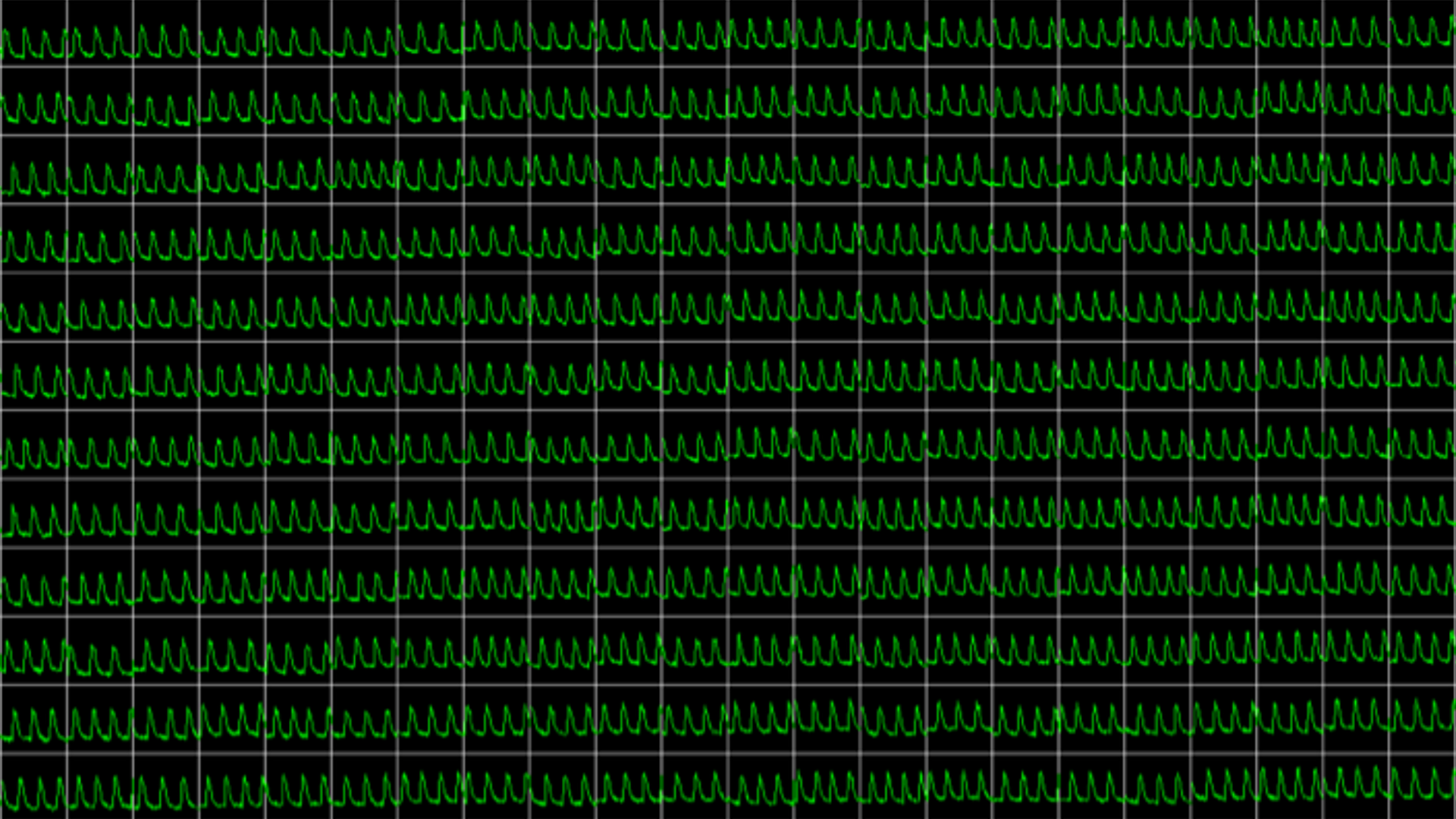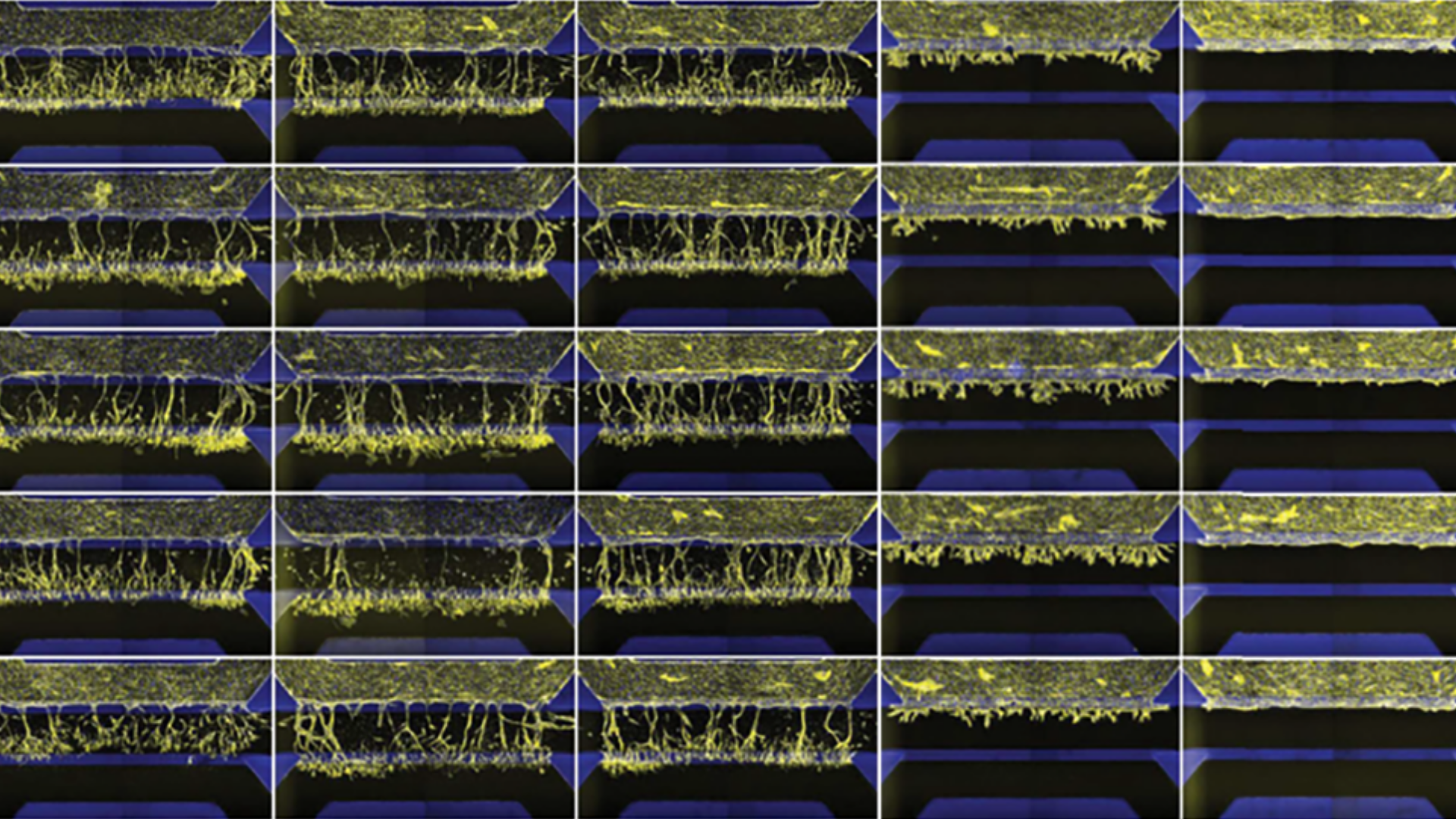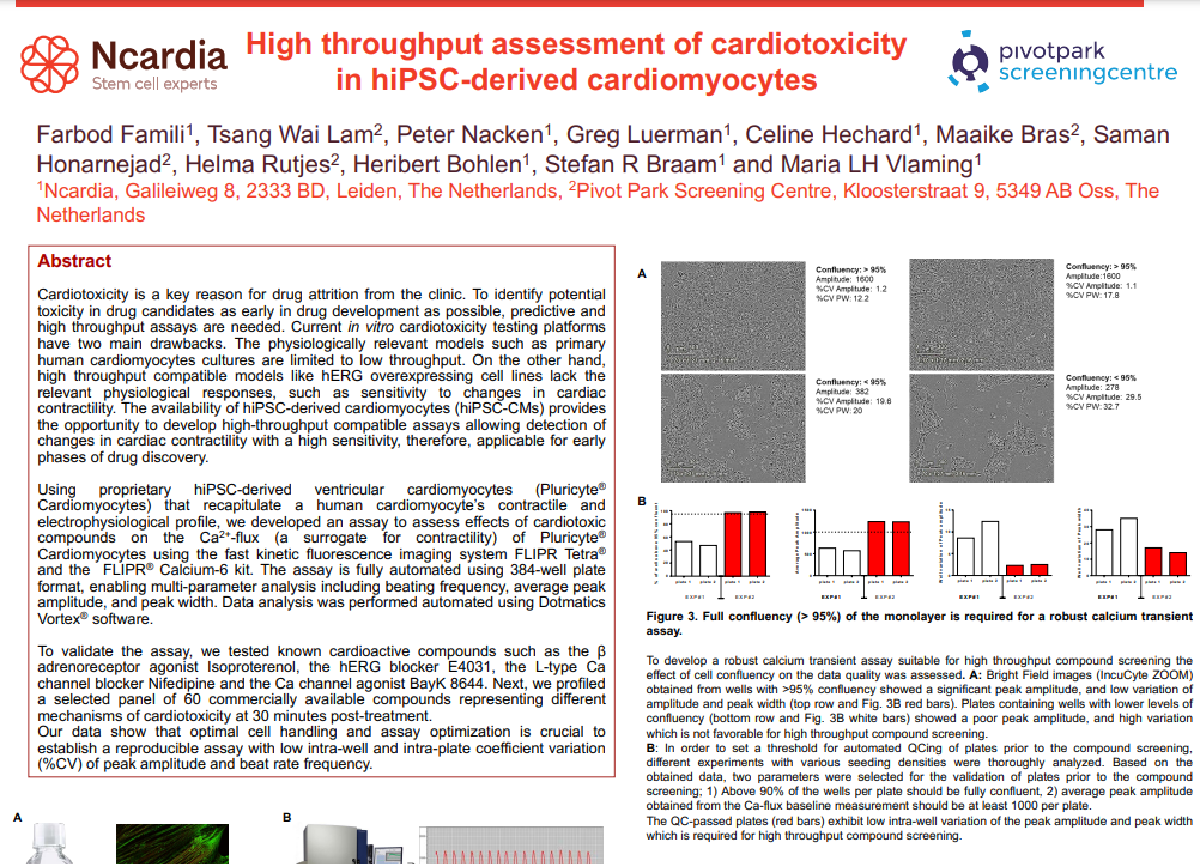Calcium transients
Disturbances in calcium signaling are associated with many neurodegenerative diseases and cardiomyopathies. Fluorescence-based assays with iPSC-derived cardiac and neuronal models can be used to monitor short and long-term drug-induced changes on calcium transients. Our scientists develop the most optimal calcium transient assay for each project and can scale it up for high-throughput screening, to accurately evaluate efficacy and safety of drug candidates early in drug development.

- Fast and real-time detection
- Acute and chronic evaluation
- Broad throughput screening range
Do you want to explore how this assay can help you progress your drug discovery programs? Contact our expert
Applications
Fluctuations in intracellular calcium levels of excitable cells are essential for skeletal and cardiac muscle contraction and neuronal communication. These fluctuations can be monitored in real-time by adding calcium-sensitive dyes to the disease or healthy iPSC-derived models or by generating iPSC-derived cells that genetically encode calcium indicators, such as GCaMP. Genetically induced calcium indicators are non-invasive and allow for detection of long-term drug-induced effects on peak rate, peak amplitude and peak-to-peak variability.
Assessing the safety of known cardioactive compounds on human iPSC-derived cardiomyocytes by measuring calcium transients in real-time.
Since calcium is the interdependent regulator between cardiomyocyte electrophysiology and contraction, compounds affecting ion channels can also affect intracellular calcium transients. With this assay peak frequency, peak amplitude and average peak width of cardiomyocytes can be evaluated.
 Representative calcium transient pattern of untreated human iPSC-derived cardiomyocytes (DMSO) versus treated with calcium channel agonist, Bay K8644, that increases peak amplitudes and peak widths, and reduces peak frequency. Lower panel shows treatment with L-type calcium channels blocker, nifedipine, that reduces calcium transient peak amplitudes and treatment with the β- adrenergic receptor agonist, isoprenaline, that increases peak frequency, and decreases peak width.
Representative calcium transient pattern of untreated human iPSC-derived cardiomyocytes (DMSO) versus treated with calcium channel agonist, Bay K8644, that increases peak amplitudes and peak widths, and reduces peak frequency. Lower panel shows treatment with L-type calcium channels blocker, nifedipine, that reduces calcium transient peak amplitudes and treatment with the β- adrenergic receptor agonist, isoprenaline, that increases peak frequency, and decreases peak width.
Real-time recordings of calcium transients in co-culture of human iPSC-derived cortical neurons and astrocytes
Calcium oscillations can be recorded in basal conditions and after treatment with therapeutic candidates to measure peak rate, peak amplitude and peak-to-peak variation, which provides representative information about the neuronal activity and the treatment-induced effects to potentially predict in vivo behavioral side effects.
 Representative calcium oscillation traces in cortical neuron & astrocyte co-cultures
Representative calcium oscillation traces in cortical neuron & astrocyte co-cultures
Our work centers on a simple yet powerful premise:
When we combine deep iPSC knowledge, broad assay capabilities and a demonstrated ability to integrate the biology of human diseases into preclinical research, we can help drug developers make critical decisions earlier and with more confidence.

Study compound-induced effects on blood vessel formation
Assay
Evaluate and quantify the levels of clinically relevant biomarkers
Assay
Obtain real-time recordings of intracellular calcium fluctuations
Assay
Get in-depth and unbiased insights into the effects of therapeutic candidates on cells
Assay
Study drug-induced effects on contractility of cardiac or skeletal muscle cells
Assay
Determine the electrophysiological effects of your therapeutic candidates
Assay
Evaluate endothelial permeability in short and long term
Assay
Study drug-induced phenotypic changes in the cell model of your interest
Assay
Obtain precise information on compounds' impact on metabolic processes

